Quince, and why you should love it
Quince looks kinda ugly, old, and primitive. But then you cook it, your entire house is perfumed, and the flavor of the fruit becomes purely magical.
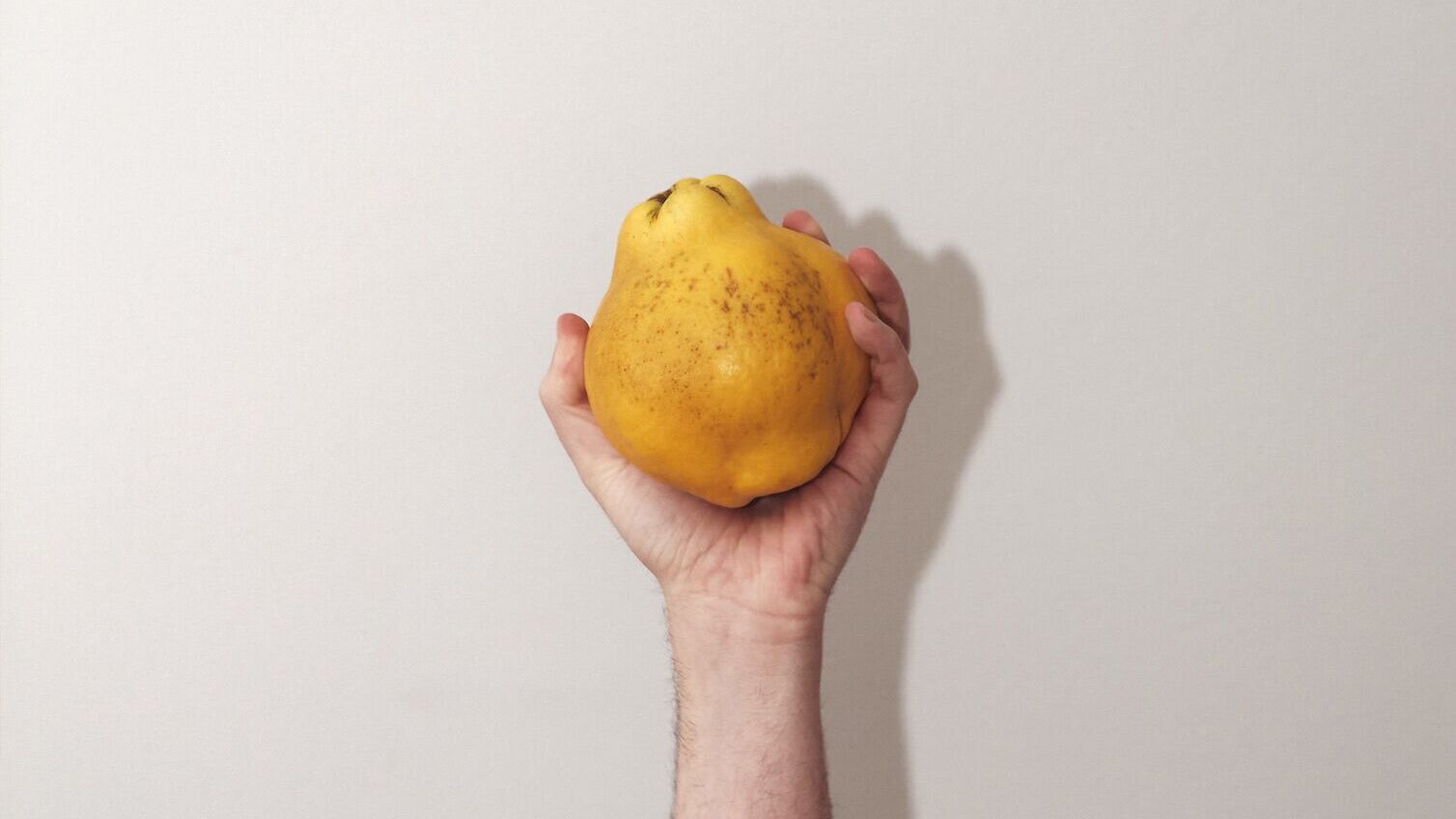
There are foods that you eat and the foods that you admire. The former are your daily lunches, midnight snacks, and potato-or-rice-or-pasta dinners, as well as your stash of chocolate and tears.
The latter are the foods you only have a couple of times a year. The foods you spend an entire year looking forward to eating again. Sometimes they're holiday dishes, but holiday dishes are a construct. You can certainly make them throughout the year if you want to.
And sometimes it's a fruit or vegetable so seasonal you still, shockingly, can't get it most of the year.
Quince is such a fruit.
In the Netherlands, it seems, hardly anybody knows what it is. That was shocking to me since Germans and Austrians certainly do. (I'm not saying all Germanic peoples are alike, don't come for me.)
Quince looks kinda ugly, old, and primitive. But then you smell it and discover a whole new world. And you wanna bite into it, but you can't. But then you cook it, and your entire house is perfumed, and the flavor of the fruit becomes purely magical.
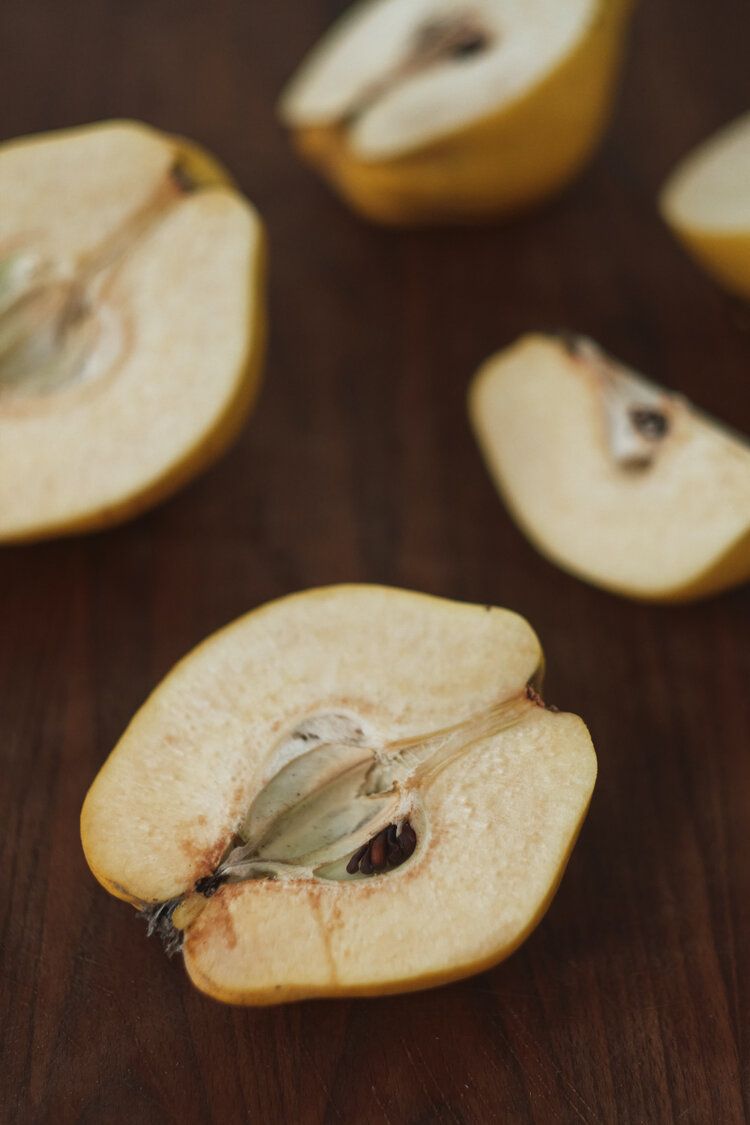
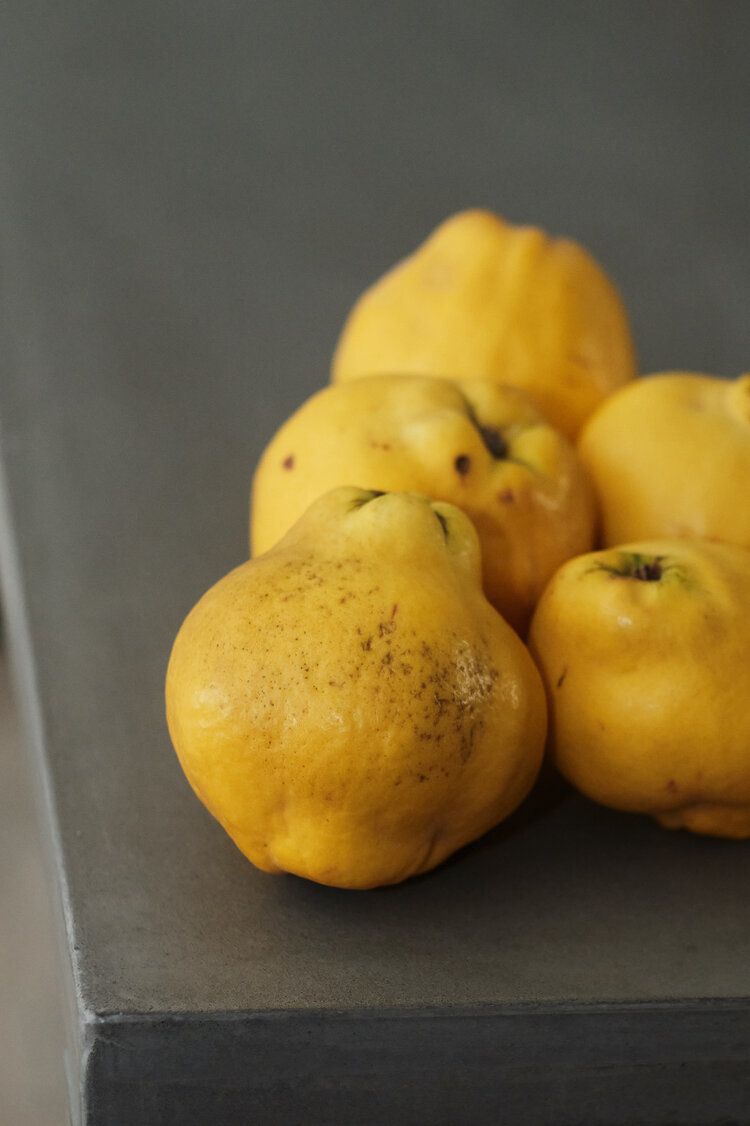
This fruit stems from the Middle East and sits in that awkward but perfectly logical place between apple and pear. They are related, and they all belong to the family roses. Most quince varieties are not pleasant to eat raw - under their thick, waxy peel, they taste slightly too tart, and the texture of their flesh makes you pucker.
Their smell is seriously amazing. It's sweet, floral, and fresh, at the same time very complex and not overbearing. (Imagine the floral scent of a pear, turn it up a notch, and remove the mushiness.) A Serbian granny would put a couple of quinces on top of her closet for the winter - the fruit keeps well - and the entire room would be perfumed. Now THAT's the scent of the winter, no matter what Yankee Candle thinks.
I grew up in Serbia, and for me, quince was a human right! I'm not saying it's that popular. I'm saying that having grandparents and living at the border between what was for centuries under Turks and what was for centuries under Austro-Hungary makes you eat quince, love quince, and maybe even have a quince tree in your backyard. You see, quince is Middle Eastern, but also surprisingly Austrian.
Being called a quince is a compliment. A woman can smell like a quince from the top of a closet. Quince (Dunja) is also a popular female name.
So now that we've established that quinces are amazing, here's what to do with them:
First things first, this fruit is not something you can quickly get in a chain supermarket. If you're interested in getting whole fruits, visit your local street market or a Turkish store. However, since quince has been coming back, I've seen quince preserves in better cheese stores (or even cheese sections in bigger supermarkets). Some restaurants might also serve quinces in different dishes or desserts.
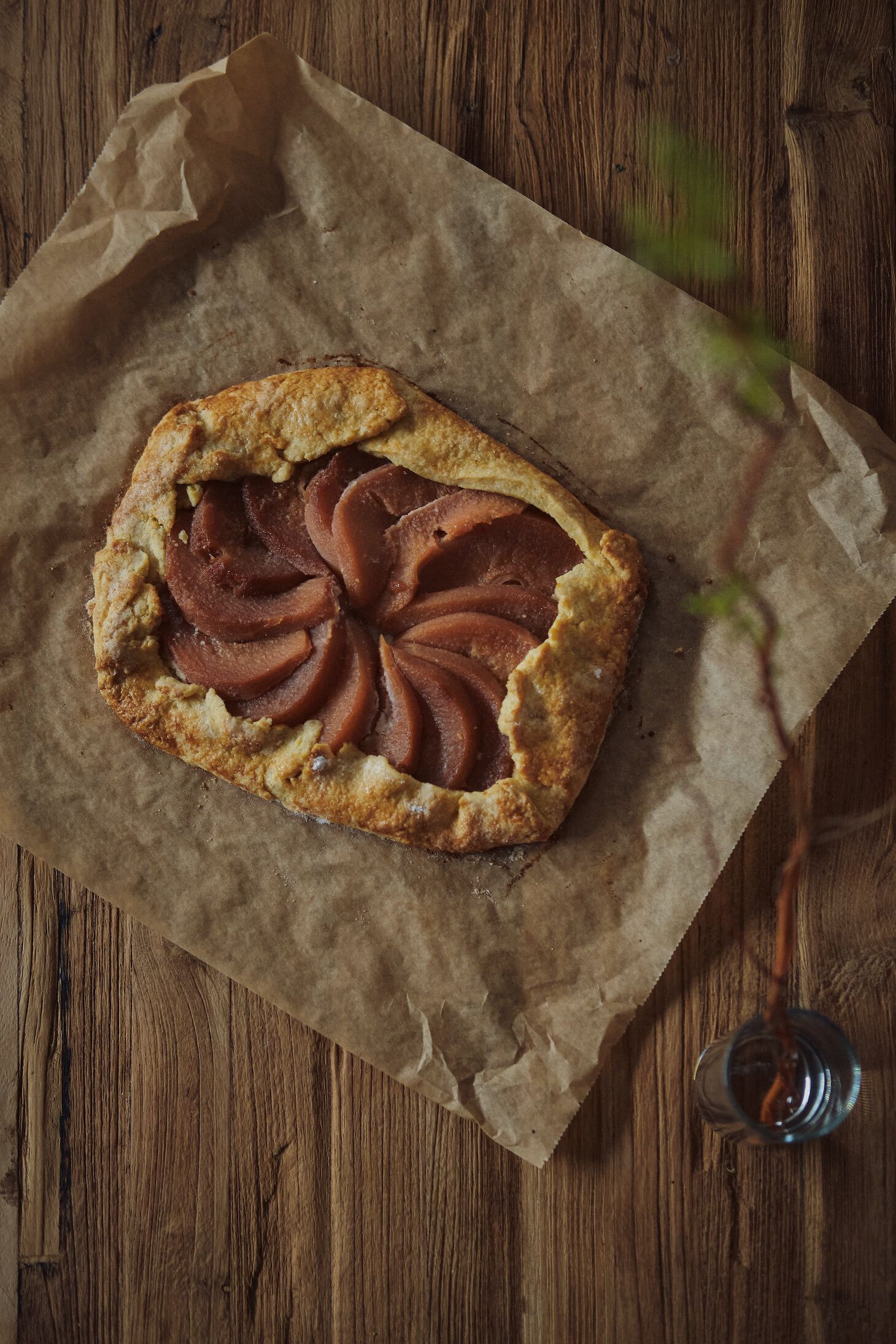
Depending on the variety and where its grown, quince season starts in October and can last until February or even early March. The fruit is hefty, and I always buy more than I plan, but it has quite a long shelf life (even longer if you turn it into a preserve).
The easiest thing to do with quinces is to poach them. They will slightly change color but taste absolutely fabulous. The process is simple, and poached quinces keep for a very long time in an airtight container with your fridge. As such, you can eat them with ice-cream (add some walnuts or hazelnuts on top), put them in a pie, or serve them alongside a piece of meat. Scroll down for the recipe for poached quince!
Quinces are full of pectin, which is a natural gelling agent. That means they're effortless to turn into jams or preserves. The word marmalade stems from Portuguese marmelada, which comes from marmelo, which means, you guessed it, quince. Marmelada itself is, in the Germanic part of the world, known as "quince cheese." It's a thick, jellified quince paste, and the recipe for it stems from Ancient Rome.
Well, I told you quinces looked old.
Poached Quince
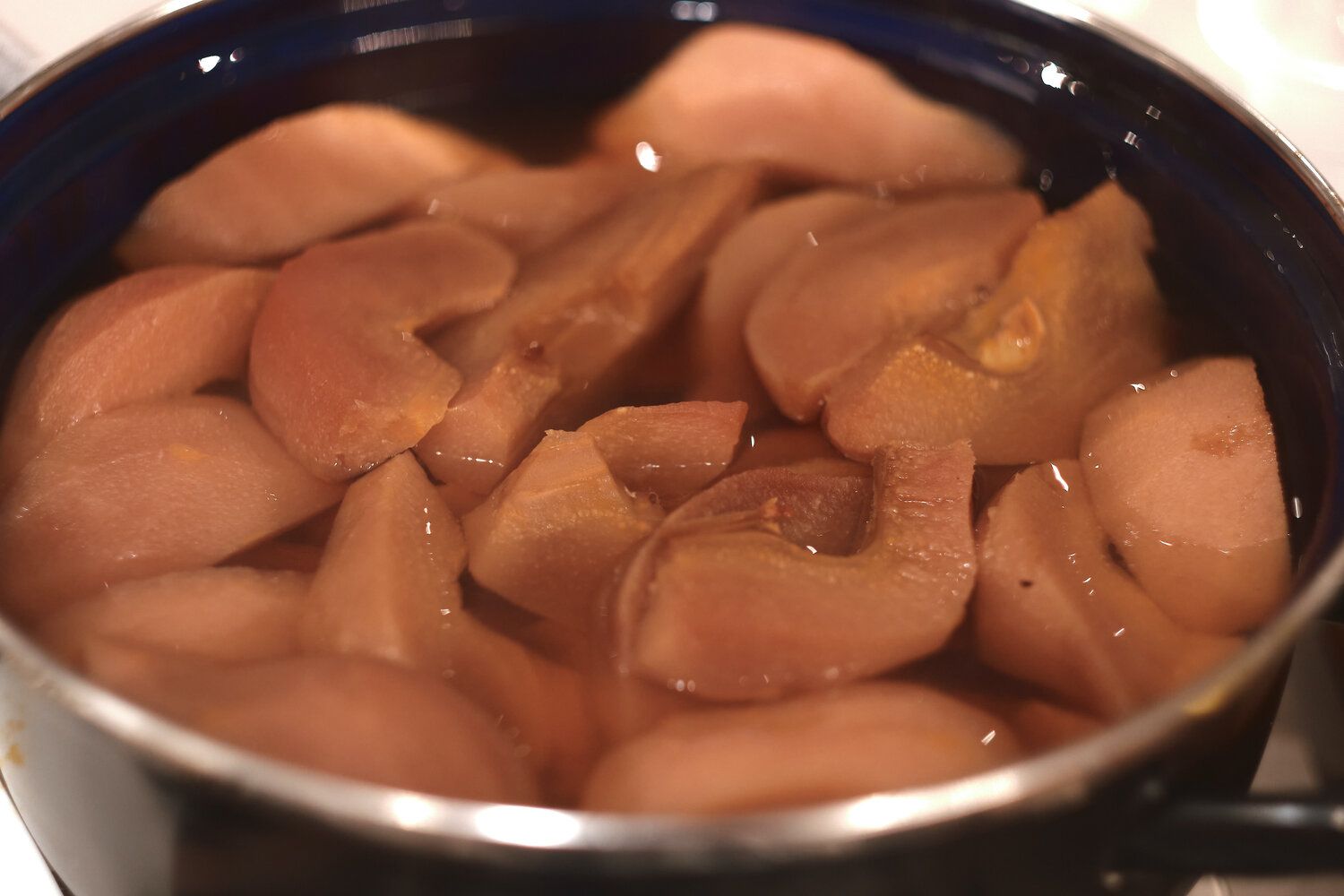
- 3kg quinces, peeled, cored, sliced
- 7 cups water (or more, or less, depending on your baking dish)
- Juice of two lemons
- 1 1/4 cups sugar
- 1 vanilla bean
Preheat the oven to 150°C (300°F).
Put all the ingredients into an oven-safe dish (some quinces should slightly peek out of the water) and cover with a lid.
Bake for two hours. Your kitchen will smell amazing. Let cool and store the poached quinces in the poaching liquid.